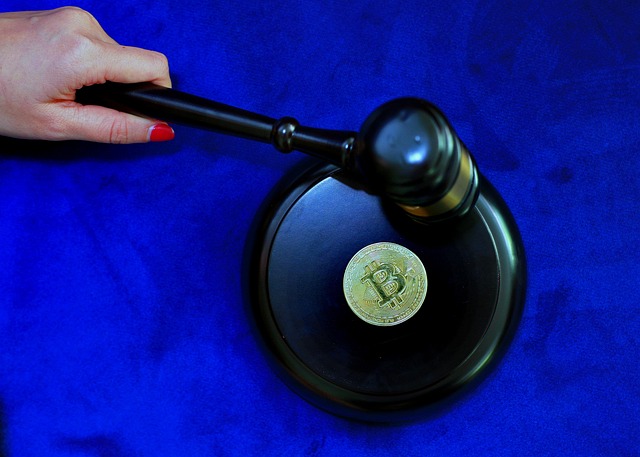Top Crypto Market Makers 2025: Leading Liquidity Providers
Author: Jameson Richman Expert
Published On: 2025-11-07
Prepared by Jameson Richman and our team of experts with over a decade of experience in cryptocurrency and digital asset analysis. Learn more about us.
The landscape of liquidity provision is changing fast — and for traders, projects, and institutional entrants the choice of partner matters. In this comprehensive guide we examine the top crypto market makers 2025, explain how they operate, compare strengths and risks, and provide a practical checklist to evaluate providers. Whether you’re a token issuer, an exchange, or an active trader, this article gives actionable insights and trustworthy resources to choose and work with a market maker in 2025.

Why market makers matter in crypto (and why 2025 is a turning point)
Market makers supply continuous buy and sell liquidity, tighten spreads, and enable efficient price discovery — functions that are essential for exchanges, token launches, and institutional trading desks. As crypto matures, a handful of structural changes make market making even more crucial in 2025:
- Institutional adoption: More custody, derivatives, and spot ETF activity requires deep, professional liquidity providers.
- Regulatory scrutiny: Exchanges and token issuers need market makers who can operate with compliance and robust risk controls.
- On-chain innovations: AMMs, concentrated liquidity (Uniswap V3-style), and cross-chain bridges introduce new types of liquidity provision and MEV (miner/executor value) considerations.
- AI and execution tech: Faster, more adaptive pricing engines and cross-venue smart order routing are changing how spreads and inventory are managed.
For background on the market maker role in financial markets, see the Market Maker entry on Wikipedia and the Investopedia primer on market makers here.
Who are the top crypto market makers 2025? (profiles and strengths)
No single provider fits every need. Below are firms that, as of 2024–2025, are widely recognized for scale, technology, or specialization in crypto markets. Use these profiles as starting points for due diligence — reputation, audited track record, and legal compliance matter.
1. Jump Crypto (Jump Trading)
Strengths: ultra-low latency execution, large cross-venue inventory, derivatives expertise. Jump Crypto is the crypto arm of Jump Trading and is known for heavy investment in execution technology and global market access. For institutional listings and derivatives markets, Jump is often a go-to counterparty for deep liquidity.
2. Wintermute
Strengths: decentralization-friendly strategies, on-chain AMM liquidity provision, derivatives market making. Wintermute has built a strong presence in both centralized and decentralized exchanges, offering algorithmic liquidity on spot and derivatives with on-chain integrations.
3. GSR
Strengths: structured OTC desks, token sale and treasury services, bespoke risk management. GSR is often selected by projects needing capital-efficient liquidity and OTC execution with compliance workflows for institutional counterparties.
4. Cumberland (DRW)
Strengths: OTC liquidity, credit relationships, multi-asset market making. Cumberland (the crypto division of DRW) combines traditional market making experience with large balance sheet support for big block trades.
5. Jane Street
Strengths: systematic strategies, risk management, global matching across venues. Jane Street’s reputation from listed markets extends into crypto and provides best-in-class pricing and execution for sophisticated counterparties.
6. Flow Traders
Strengths: ETF and listed product liquidity, robust electronic market making. Flow Traders has expanded into crypto ETFs and spot markets, supplying liquidity across tokenized products and listed derivatives.
7. Two Sigma / Two Sigma Digital
Strengths: quant research, data-driven price models, cross-asset strategies. Two Sigma brings large-scale data science and risk management to crypto market making.
8. B2C2
Strengths: institutional OTC desks, derivatives hedging, credit execution. B2C2 is well-known among institutional desks for block trades, hedging, and managed liquidity programs.
9. Specialized boutique firms and regional providers
Strengths: bespoke agreements, token launch support, exchange-specific programs. Smaller specialized market makers (e.g., those focusing on spot market-making for a specific region or niche tokens) can outperform on service and commercial terms for new listings.
Note: the crypto market making landscape evolves quickly. Expect new entrants backed by venture capital and quantitative teams to appear, and for legacy trading firms (equities/FX) to expand their crypto footprints. Always verify registration, compliance, and track record when engaging any provider.
How top crypto market makers operate in 2025
Understanding how market makers function helps you evaluate proposals and negotiate better terms. Below are the core operational elements.
Pricing engines and quoting logic
- Real-time spread adjustments: pricing algorithms dynamically widen or tighten spreads based on volatility, venue depth, and order flow.
- Cross-venue hedging: market makers use smart order routers to hedge exposure across spot, perpetuals, and options.
- On-chain provision: for AMMs and DEX pools, LP algorithms optimize concentrated positions and fee capture versus impermanent loss.
Inventory and risk controls
- Inventory limits per token, per venue, and per counterparty.
- Automated rebalancing via derivatives (perpetuals, futures) to limit directional exposure.
- Stop-loss thresholds and circuit-breaker systems during extreme market moves.
Credit, settlement, and custody
Institutional market making increasingly involves credit lines, escrow mechanics, and custody integrations to support OTC block trades and token treasury management. Expect advanced providers to offer audited custody solutions or to partner with regulated custodians.
Fees, rebates, and commercial models
Commercial structures vary: fixed monthly retainer + performance rebate, revenue share models, or pay-for-spread (per-lot) pricing. Projects launching tokens often negotiate initial subsidized programs to seed liquidity. To understand professional fee structures in detail, see this practical guide to fees for professionals (resource): Practical Guide to Fees for Professional Fees.

Top market maker strategies for different use-cases
Match the provider and strategy to your objective:
- Exchange listing / market making for a new token: choose firms with on-exchange experience and knowledge of listing requirements, including on-chain LP integration if listing on DEXs.
- Institutional order flow (OTC): providers with strong credit, settlement rails, and low slippage for block trades (Cumberland, B2C2, GSR).
- High-frequency arbitrage and derivatives coverage: firms with derivatives desks and cross-venue connectivity (Jump Crypto, Jane Street, Flow).
- DeFi / AMM liquidity optimization: specialized teams that manage concentrated liquidity and MEV risk (Wintermute and boutique LP managers).
How to evaluate and choose a crypto market maker — a step-by-step checklist
Use this practical checklist during selection and negotiations.
- Performance metrics: request historical spread, depth (size at quote), and slippage statistics across the venues you care about. Ask for time-weighted average spreads and worst-case outliers.
- Audit and compliance: confirm KYC/AML processes, legal entity structure, and any relevant licenses. If you’re in a regulated jurisdiction, ensure the provider can operate within local rules.
- Technology and connectivity: verify API latency, support for FIX/REST/WebSocket, and cross-venue routing. Ask how they monitor and recover from outages.
- Risk management: obtain details on inventory caps, use of derivatives for hedging, and circuit-breakers.
- Commercial terms: compare retainer vs. performance-based fees, minimum duration, termination clauses, and confidentiality provisions. For practical fee structures see: fee guide.
- Reputation and references: request references from other token issuers or exchanges and verify execution quality using independent market data.
- Integration scope: confirm whether the provider supports both centralized exchanges (CEX) and decentralized venues (DEX), and whether they will provide on-chain reporting for audits.
- Termination & escrow: ensure clear rules on funds, token returns, and dispute resolution for program exits.
Practical examples & case studies
Example 1 — Token launch and initial liquidity
A mid-size protocol launching a governance token engaged a boutique market maker for a 90-day program: initial retainer + spread-based rebate. The market maker provided quoted depth within 0.5–1% spreads on major CEXs and seeded a concentrated Uniswap V3 position on mainnet. The project’s liquidity metrics (on-chain TVL + order book depth) improved, allowing market takers and institutional OTC counterparties to trade with acceptable slippage.
Example 2 — Institutional trading desk seeking execution for large orders
An asset manager needed consistent execution for monthly rebalancing of token allocations. They selected a market maker with OTC and derivatives hedging capabilities to remove market impact. The provider hedged exposure via perpetuals and delivered block trades at mid-market with pre-agreed slippage thresholds.
Why memecoins and new tokens need bespoke market-making
Community-driven coins can be extremely volatile and sensitive to order flow. Specialized market makers can design programs that include volatility-adjusted spreads and temporary price stabilization support. For a real-world look at how token narratives can influence price dynamics and the need for liquidity, read this in-depth analysis on a high-profile token: Donald Trump Coin Price Prediction — Analysis.

Fees, exchanges, and cost optimization
Fees are a major component of execution costs. When comparing market makers and trading venues, consider:
- Maker/taker fees and tiered discounts.
- Rebates for providing liquidity.
- Withdrawal, deposit, and on-chain gas costs for DEX/bridge interactions.
For a granular guide to spot trading fees on a major exchange and how to optimize costs when pairing with market makers, see this spot trading fee guide: Spot Trading Fee — Binance. If you’re evaluating consumer platforms and their crypto fee schedules, this Revolut fee guide explains consumer fee exposure which can be relevant for retail liquidity sourcing: Revolut Fee for Crypto 2025 Guide.
On-chain vs off-chain market making
There are important differences and each has trade-offs:
- Off-chain (CEX/OTC): deeper order books, credit facilities, and derivatives hedging. Best for institutional block trades and low-latency execution.
- On-chain (DEX): transparency, composability with DeFi protocols, and programmable liquidity. Requires managing impermanent loss, on-chain transaction costs, and MEV exposure.
Modern market makers often operate in both realms and use hedging across derivatives to limit directional risk from on-chain exposures.
Technology and AI: what’s new for 2025
Expect these tech trends to dominate market making in 2025:
- AI-powered quoting: machine learning models that adapt spread widths based on pattern recognition of incoming order flow and news events.
- Cross-venue smart routing: single order execution algorithms that split orders across CEXs, DEXs, and OTC to minimize slippage.
- On-chain analytics for on-ramp liquidity: better wallet analytics to detect toxic flow and wash-similar patterns.
- MEV-aware strategies: advanced protections and fee bidding to reduce extractable value that harms LP returns.

Regulatory and compliance considerations
In 2025, regulation is a major factor in selection:
- Providers operating in regulated jurisdictions should demonstrate compliance frameworks and supervision.
- For token issuers, ensure your market maker has AML/KYC processes that align with your legal counsel’s recommendations.
- Ask for transaction reporting and audit trails to satisfy regulators or auditors.
For reference on enforcement and market abuse principles from a high-authority source, consult guidance from the U.S. Securities and Exchange Commission (SEC) at sec.gov.
How traders can benefit from working with market makers (and tools to use)
Active traders use market makers to improve execution, reduce slippage, and access liquidity pools not visible in standard order books. Here are practical ways traders and firms can leverage market makers:
- Use liquidity programs to backstop large limit orders when exiting positions.
- Partner with market makers for algorithmic execution across spot and derivatives.
- Leverage real-time trading signals and execution research to time orders — an example resource for futures trading strategies and signal usage is this practical guide: Live Crypto Futures Trading Signals — Practical Guide for 2025.
Risks to monitor when using market makers
Key risk categories include:
- Counterparty risk: the market maker’s insolvency or operational failure.
- Toxic flow: fleeting order flow that causes losses to liquidity providers, potentially translating into worse fills for your orders.
- Regulatory risk: sudden legal changes that impact trading, custody, or cross-border settlement.
- Operational outages: exchange downtime or smart contract failures that affect both on-chain and off-chain liquidity.

Checklist before signing a market-making agreement
- Confirm performance KPIs and SLA (uptime, latency, response times).
- Obtain audit-friendly reporting (daily fills + P&L statements).
- Define clear fee and rebate mechanics, minimum terms, and early termination penalties.
- Require evidence of technology and security certifications (SOC2, penetration test summaries, etc.).
- Agree on dispute resolution and fund custody arrangements.
Resources and sign-up links for traders and projects
If you’re a trader or project looking to test liquidity or execute strategies, these exchange registrations can help you access markets and test market maker programs quickly:
- Register on Binance — access deep spot and futures markets.
- Sign up at MEXC — offers spot, futures, and token listing programs.
- Register with Bitget — derivatives and copy-trading features.
- Join Bybit — strong derivatives liquidity and incentive programs.
Additional practical reading on fees and token-specific market dynamics:
- Professional fee guide: Practical Guide to Fees for Professional Fees.
- Spot fees overview (Binance example): Spot Trading Fee — Binance.
- Futures trading signals and execution: Live Crypto Futures Trading Signals — Guide.
- Consumer platform fees (context for retail liquidity): Revolut Fee for Crypto 2025 Guide.
- Token behavior and narrative-driven liquidity example: Donald Trump Coin — Price Analysis.
Future outlook — what will distinguish the best market makers in 2025?
The next wave of top providers will combine:
- Regulatory maturity: legal clarity, registered entities, and audited custody partnerships.
- Cross-protocol expertise: the ability to manage liquidity across CEXs, DEXs, and layer-2s while minimizing on-chain costs and MEV exposure.
- Advanced risk frameworks: automated hedging via derivatives, inventory stress testing, and scenario modeling for black swan events.
- Interoperability: tooling for projects to integrate market making with token vesting, treasury management, and on-chain governance safely.

Conclusion — actionable steps to engage a market maker in 2025
To move from research to a live program, follow these steps:
- Shortlist 3–5 providers based on fit (CEX/DEX focus, institutional vs. retail, geographic coverage).
- Request an RFP: include KPIs, markets, and sample order-flow scenarios for benchmarking.
- Negotiate a pilot: 30–90 day trial with clear performance metrics and an agreed termination path.
- Monitor and audit: daily reporting, mid-program review, and post-engagement analysis.
Choosing the right market maker in 2025 is a strategic decision that impacts price stability, investor confidence, and trading costs. Use the profiles, checklist, and resources above to make an informed choice, and always confirm compliance, reporting, and technology SLAs before signing.
Further reading and tools — get started with exchange access:
If you need a tailored vendor shortlist or an RFP template to evaluate market makers for your token or trading desk, I can prepare a customizable RFP and comparison matrix based on your markets and regulatory needs.